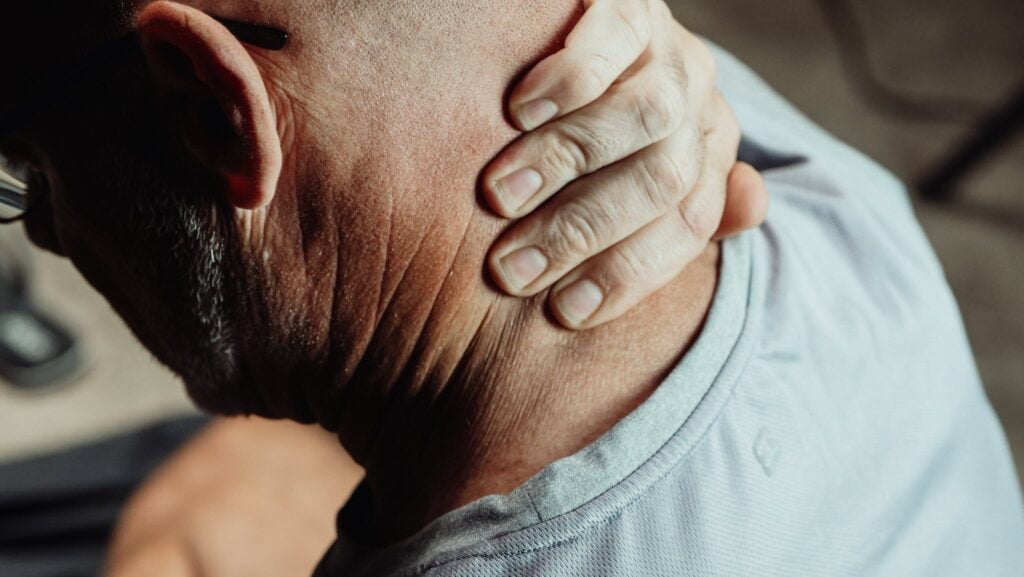FREE SHIPPING OVER $50
Combating Neck Hump: Causes, Exercises, and Lifestyle Tips
Do you have a hump on the back of your neck that makes you feel self-conscious? Do you suffer from neck pain, headaches, or stiffness? If so, you might have a condition called neck hump, also known as dowager’s hump or buffalo hump. This is a common problem that affects many people, especially those who spend a lot of time sitting or looking down at their phones or computers. But don’t worry, there are ways to combat neck hump and improve your posture and health. In this article, we will explain what causes neck hump, how to get rid of neck hump with exercises and lifestyle adjustments, and how to prevent it from coming back.
What Causes Neck Hump?

Neck hump is not a disease, but a symptom of poor posture and muscle imbalance. When you slouch or hunch your shoulders, you stress the muscles and ligaments supporting your neck and upper back. Over time, this can lead to inflammation, fat accumulation, and calcium deposits in the area where your neck meets your spine. This creates a visible bump that can make you look older and less confident.
Some factors that can contribute to neck hump are:
- Aging: As you age, your bones lose density and your muscles lose strength and elasticity. This can make it harder to maintain good posture and alignment.
- Hormonal imbalance: Some conditions that affect your hormones, such as Cushing’s syndrome or polycystic ovary syndrome (PCOS), can cause fat to accumulate in the upper back and neck area.
- Osteoporosis: This is a condition that causes your bones to become weak and brittle. It can affect any bone in your body, but it is more common in the spine. Osteoporosis can cause the vertebrae in your neck to collapse or fracture, resulting in a curved spine and a hump.
- Genetics: Some people are more prone to developing neck hump than others, due to their bone structure, body type, or family history.
How to Get Rid of Neck Hump with Exercises
The good news is that neck hump is not permanent and can be reversed with proper exercises. The goal of these exercises is to stretch and strengthen the muscles that support your neck and upper back, improve your posture and alignment, and reduce inflammation and pain. Here are some of the best exercises for neck hump:
1. Chin tucks
This exercise helps to correct forward head posture, which is one of the main causes of neck hump. To do it, sit or stand with your back straight and your shoulders relaxed. Slowly tuck your chin in towards your chest, as if you are trying to make a double chin. Hold for 5 seconds, then relax. Repeat 10 times.
2. Neck stretches
This exercise helps to loosen up the tight muscles in your neck and shoulders. To do it, sit or stand with your back straight and your shoulders relaxed. Gently tilt your head to one side, bringing your ear towards your shoulder. You should feel a stretch on the opposite side of your neck. Hold for 15 seconds, then switch sides. Repeat 3 times on each side.
3. Shoulder rolls
This exercise helps to improve your shoulder mobility and posture. To do it, sit or stand with your back straight and your shoulders relaxed. Slowly roll your shoulders up, back, down, and forward in a circular motion. Do 10 rolls in one direction, then reverse. Repeat 3 times in each direction.
4. Wall angels
This exercise helps to strengthen the muscles between your shoulder blades, which are important for keeping your spine straight and preventing neck hump. To do it, stand with your back against a wall and your feet about a foot away from the wall. Bend your elbows at 90 degrees and raise your arms to the sides, so that your upper arms are parallel to the floor and your forearms are perpendicular to the floor. Your elbows, wrists, and backs of your hands should touch the wall. Slowly slide your arms up and down the wall, keeping contact with the wall at all times. Do 10 repetitions.
Posture Correction Exercises
These exercises help you to become more aware of your posture and how to correct it throughout the day. To do them, you need a mirror or a camera that can record yourself. First, stand in front of the mirror or camera with your normal posture. Observe how you look from different angles: front, side, and back. Notice if you have any signs of poor posture, such as forward head, rounded shoulders, arched lower back, or protruding belly. Then, try to correct your posture by following these steps:
- Align your ears over your shoulders
- Pull your shoulders back and down
- Tuck in your chin slightly
- Engage your core muscles by drawing your belly button in
- Keep your feet hip-width apart and your knees slightly bent
- Balance your weight evenly on both feet Record yourself again with your corrected posture and compare the difference. Repeat this exercise several times a day, until you can maintain good posture without thinking about it.
How to Get Rid of Neck Hump with Lifestyle Adjustments
In addition to exercises, there are some lifestyle changes that can help you combat neck hump and improve your overall health. Here are some tips:
- Avoid slouching or hunching when sitting or standing. Keep your head up, your shoulders back, and your chest out.
- Adjust your workstation or device so that you don’t have to look down or strain your neck. Use a chair that supports your lower back and a desk that is at the right height for you. If you use a computer or laptop, place the screen at eye level or slightly below. If you use a phone or tablet, hold it at eye level or use a stand or holder.
- Take frequent breaks from sitting or looking at screens. Every 20 minutes, get up and move around, stretch your neck and shoulders, and change your position.
- Use a pillow that supports your neck and spine when sleeping. Avoid sleeping on your stomach, as this can cause your neck to twist and your spine to curve. Sleep on your back or side, with a pillow that is not too high or too low.
- Drink plenty of water and eat a balanced diet. This can help you stay hydrated, reduce inflammation, and prevent weight gain, which can worsen neck hump.
- Consult your doctor if you have any medical conditions that can cause or contribute to neck hump, such as hormonal imbalance or osteoporosis. Your doctor may prescribe medication or other treatments to help you manage your condition and reduce its impact on your neck and spine.
Conclusion
Neck hump is a common problem that can affect your appearance, confidence, and health. However, it is not irreversible and can be improved with exercises and lifestyle adjustments. By following the tips in this article, you can combat neck hump and enjoy a better posture and quality of life.
If you found this blog post insightful, explore more by delving into our related articles:
- Hemorrhoid Banding: Everything You Need to Know | Procedure & Recovery
- Effective Steps for Identifying and Strengthening your Weak Core Muscles
- The Best Kegel Exercises for Men to Combat Erectile Dysfunction
- Natural Ways to Ease Ulcerative Colitis Flare-Ups
- 10 Natural Ways to Lower Cortisol Levels: Reclaim Your Peace
- How to Tighten Loose Skin Naturally
- How Gut Health and Probiotics Affect Your Overall Well-being
- L-glutamine for Gut Health and Bloating
We trust you’ll find these insights valuable. Feel free to share and leave a comment if you have any more questions.



